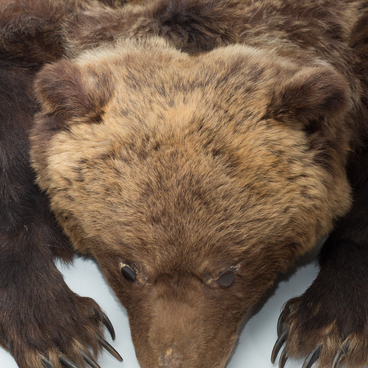The Khanty are one of the indigenous peoples of Siberia. The ethnonym “Khanty” is formed from the native name “khante”, which means “human”. In Rus, they were called the Ostyaks. The traditional occupations of the Khanty include river fishing and reindeer herding. From ancient times, they also collected berries and nuts, hunted fur-bearing animals, bears and moose.
These people sewed clothes from animal skins and fur, fish skin and bird skins, broadcloth, linen, and nettle fabrics. Everyday and ceremonial outfits were embroidered with traditional patterns. The style of children’s clothes did not differ from adults’ clothes. However, there were differences in details, decorations, and ornamentation.
Children’s winter unfastened clothes — the Khanty call it “sak” — were decorated with a special rectangular piece of fabric. It was embroidered with colored buttons and pendants in the form of chains with coins and beads at the ends. It was believed that the ringing of coins and beads scared away evil spirits. This piece of fabric was attached to a fur collar, which was made of squirrel or bird skins.
A children’s fur coat is displayed at the exhibition “Ugra Heritage”. The sak was made in 1990 by Feodosia Kayukova for her daughter from the Tukan 1 settlement in the Nefteyugansk District. The fur coat is made of red velvet. The wide collar made of pieces of squirrel paw fur falls on the chest. The sak lining was made by the craftswoman from the white padded cotton undershirt decorated with blue and red spots. Reindeer fur mittens are sewn to the sleeves of the fur coat. The edges are trimmed with otter fur. The fur of this animal is warm and does not wear out for a long time, so clothes for both children and adults are often sewn from this fur.
The edges of the sak are decorated with an ornamental beaded ribbon. When girls get their first teeth, then their clothes started to be decorated with stripes. Since the sak is wrapped with the right side up, then the right side is decorated more than the left one. Ornaments are placed at some distance from the hemline, along the hem just above the knee, as well as along the bottom of the sleeves. The pattern always indicates which group of the Khanty the owner of the sak belongs to.
Nowadays, the Khanty wear both modern clothes and traditional outfits.
These people sewed clothes from animal skins and fur, fish skin and bird skins, broadcloth, linen, and nettle fabrics. Everyday and ceremonial outfits were embroidered with traditional patterns. The style of children’s clothes did not differ from adults’ clothes. However, there were differences in details, decorations, and ornamentation.
Children’s winter unfastened clothes — the Khanty call it “sak” — were decorated with a special rectangular piece of fabric. It was embroidered with colored buttons and pendants in the form of chains with coins and beads at the ends. It was believed that the ringing of coins and beads scared away evil spirits. This piece of fabric was attached to a fur collar, which was made of squirrel or bird skins.
A children’s fur coat is displayed at the exhibition “Ugra Heritage”. The sak was made in 1990 by Feodosia Kayukova for her daughter from the Tukan 1 settlement in the Nefteyugansk District. The fur coat is made of red velvet. The wide collar made of pieces of squirrel paw fur falls on the chest. The sak lining was made by the craftswoman from the white padded cotton undershirt decorated with blue and red spots. Reindeer fur mittens are sewn to the sleeves of the fur coat. The edges are trimmed with otter fur. The fur of this animal is warm and does not wear out for a long time, so clothes for both children and adults are often sewn from this fur.
The edges of the sak are decorated with an ornamental beaded ribbon. When girls get their first teeth, then their clothes started to be decorated with stripes. Since the sak is wrapped with the right side up, then the right side is decorated more than the left one. Ornaments are placed at some distance from the hemline, along the hem just above the knee, as well as along the bottom of the sleeves. The pattern always indicates which group of the Khanty the owner of the sak belongs to.
Nowadays, the Khanty wear both modern clothes and traditional outfits.



